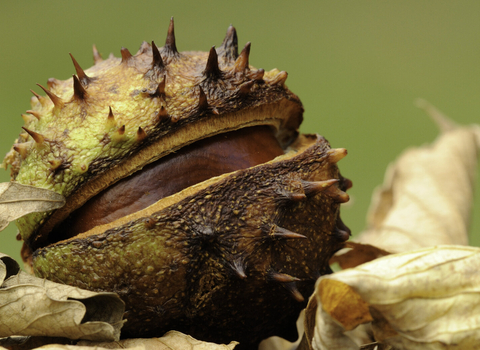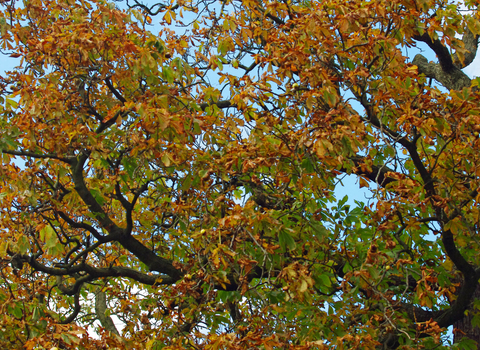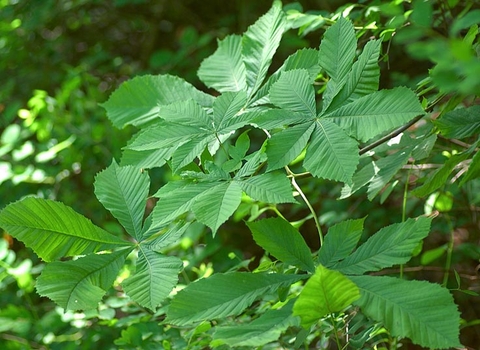
Amy Lewis

Gillian Day

©northeastwildlife.co.uk
Horse chestnut
A tall, broad tree of woodlands, roadsides and parks, the introduced horse chestnut is familiar to many of us the 'conker' producing tree - its shiny, brown seeds appearing in their spiny cases in autumn.
Scientific name
Aesculus hippocastanumWhen to see
January to DecemberSpecies information
Category
Statistics
Height: up to 40mIntroduced, but naturalised species. Listed as near threatened on the global IUCN Red List of Threatened Species.
